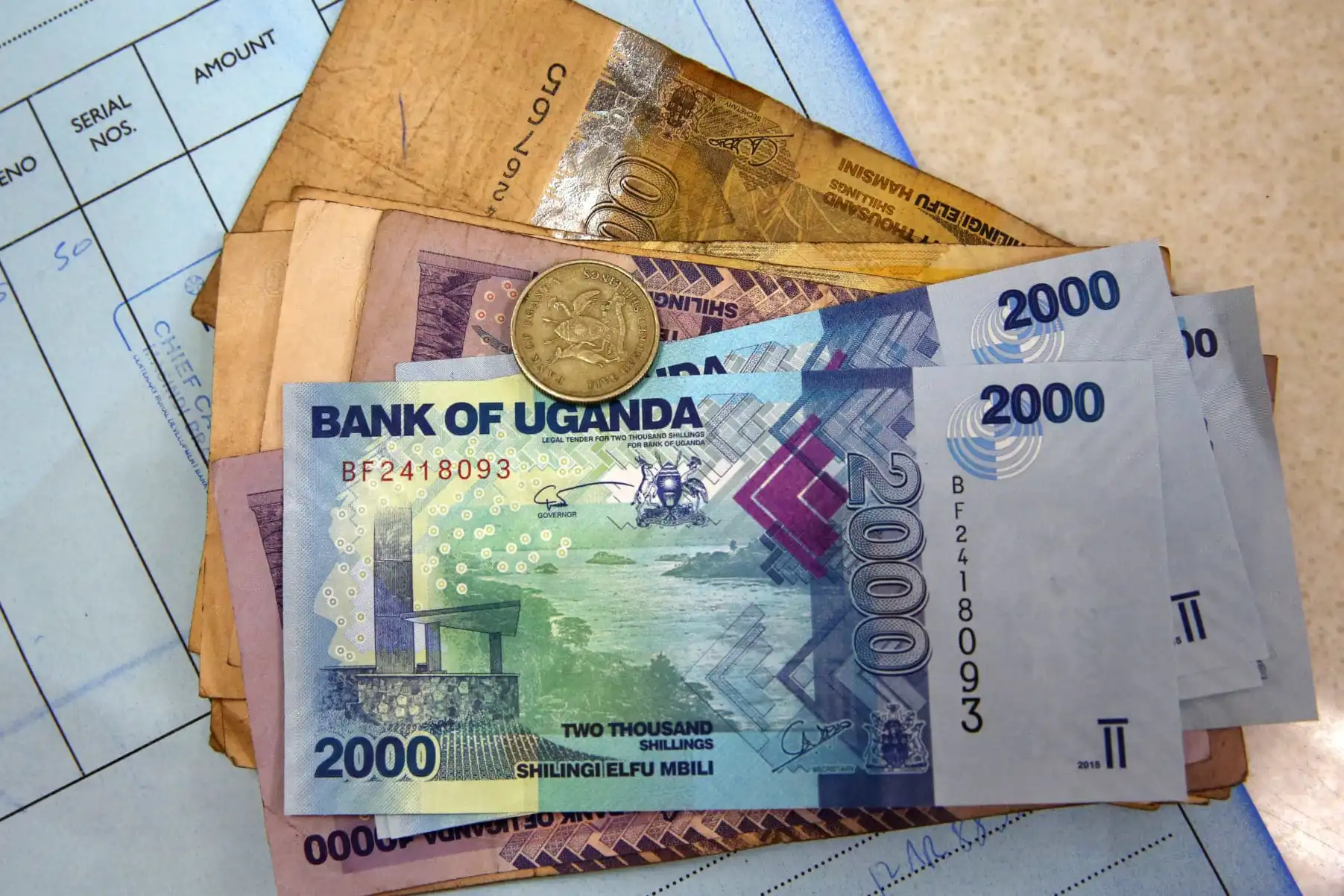
It’s no secret that Uganda’s currency purchasing power has been declining over the past few years. Everyone’s talking about how the economy’s biting—how rent is up, food prices are wild, and salaries don’t stretch anymore. But we all know that part, it’s very obvious to any Ugandan handling any bit of money… What many don’t quite grasp is the why—why the Ugandan shilling is so weak against other currencies like the dollar? Why is it so low?
This article covers just that, the why our Ugandan shilling is so weak, peeling back the layers on the forces that have chipped away at your wallet’s strength.
To put things into perspective: in January 2015, you could exchange UGX 2,800 for one US dollar. Ten years later, you’re handing over about UGX 3,660 for that same greenback—a 32% drop in value. Imagine the rising cost of basics like cooking oil, fuel, or even school fees when your currency steadily loses strength.
Behind this slump, Uganda’s foreign-exchange reserves, which once covered 5.2 months of imports, have dwindled to around 4.1 months today, and this reduced cushion means any shock or disturbance, like droughts, global slowdowns, or pandemics, sends the shilling tumbling quicker.
#1. Uganda Buys More Than It Sells
One of the biggest causes of Uganda’s shilling decline is the country’s skewed trade balance, as Uganda’s trade patterns are heavily tilted toward imports. The country imports a significantly larger volume of goods than it exports.
Sure, Uganda exports coffee, tea, and fish, but the volume and value of these exports have remained relatively stagnant. Meanwhile, what we buy from other countries keeps rising.
Every time Uganda imports, it pays in foreign currencies, mainly US dollars. Since we’re not earning enough from exports to balance this demand, we keep selling out our shillings to buy dollars without bringing back the dollars through exports. This mismatch creates a persistent shortage of dollars in the economy.
And when demand for dollars outweighs supply, the value of the shilling drops. The next round of imports then becomes even more expensive, fuelling inflation and putting pressure on local businesses.
#2. Debt That Comes Back to Bite
Over the last decade, Uganda’s external debt has nearly doubled, and most of this borrowing has been in foreign currency meant to fund large infrastructure projects like roads and power plants.
While some of these investments were necessary, the loans come with repayment obligations—in dollars.
Imagine you lent me $1 when the exchange rate was UGX 4,500. To repay you now, I need to buy that dollar at UGX 5,100 before I can service that debt…but that means I’m spending more shillings than I borrowed, every time I have a debt to pay.
In 2023 alone, Uganda paid US$ 1.1 billion in debt servicing. That’s a massive outflow of dollars that could have supported trade, investment, or bolstered foreign reserves. Worse still, if the shilling weakens further, it takes even more local currency to buy the dollars needed for repayments, piling pressure on the economy and increasing inflation.
#3. Too Many Shillings, Not Enough Goods
Between 2019 and 2023, the Bank of Uganda expanded the money supply by an average of 18% per year, far outpacing economic growth.
In simple terms, more shillings were being printed and circulated, but without a matching increase in goods and services for the extra money to cater for. More money, fewer goods. What happens? Prices rise, and that, dear reader, is called inflation.
It also creates a psychological mindset where people start losing faith in the shilling. Look at Uganda’s economy, you can be making a monthly salary of 1 million Uganda shillings and barely manage rent and groceries.
We discuss more of this in the article Saving in Dollars in Uganda: The Trick to Beating Inflation in 2025.
When confidence in a currency drops, individuals and businesses turn to more stable currencies like the dollar. This increases demand for foreign currency and chips away further at the shilling’s value.
#4. When the World or Weather Hits Back
Uganda’s economy hasn’t been spared from external shocks as well. The COVID-19 pandemic, for example, devastated tourism, one of Uganda’s biggest foreign income sources. In 2020, tourist earnings fell by 66%.
To that, add repeated droughts between 2021 and 2023, which hit key exports like coffee and tea.
These disruptions reduced foreign exchange earnings greatly, and thus, with fewer dollars coming in from such exports, Uganda’s ability to maintain a stable currency took a hit. Environmental unpredictability is now as much an economic risk as it is an agricultural one.
What This Means for You
Your Money Buys Less: A weaker shilling means higher prices on imported goods—fuel, medicine, electronics, school supplies.
Wages Lag Behind: Even if you get a raise, it’s probably not enough to beat inflation.
Savings Shrink: If your savings aren’t growing faster than inflation, they’re losing value. The UGX 100,000 that sustained someone a decade ago won’t even pay rent today.
Fewer Jobs: Currency instability scares off investors and slows down businesses. That means fewer new jobs, and sometimes job cuts, as companies struggle to stay afloat.
Uganda’s currency struggles are complex; there is very little the wananchi can do about it. That said, the more we understand what’s going on, the better we can adapt, demand better choices, and secure our financial future.
In the meantime, here are some Money-saving hacks to survive Uganda’s Kampala Hustle
